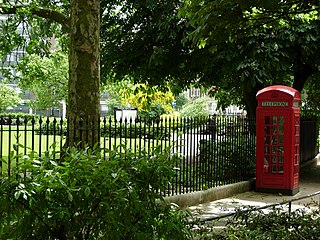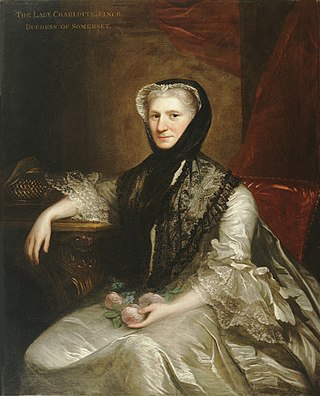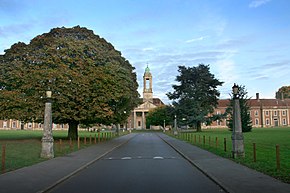
Bloomsbury is a district in the West End of London, part of the London Borough of Camden in England. It is considered a fashionable residential area, and is the location of numerous cultural, intellectual, and educational institutions. Bloomsbury is home of the British Museum, the largest museum in the United Kingdom, and several educational institutions, including University College London and a number of other colleges and institutes of the University of London as well as its central headquarters, the New College of the Humanities, the University of Law, the Royal Academy of Dramatic Art, the British Medical Association and many others. Bloomsbury is an intellectual and literary hub for London, as home of world-known Bloomsbury Publishing, publishers of the Harry Potter series, and namesake of the Bloomsbury Group, a group of British intellectuals which included author Virginia Woolf, biographer Lytton Strachey, and economist John Maynard Keynes.

Berkhamsted is a historic market town in Hertfordshire, England, in the Bulbourne valley, 26 miles (42 km) north-west of London. The town is a civil parish with a town council within the borough of Dacorum which is based in the neighbouring large new town of Hemel Hempstead. Berkhamsted, along with the adjoining village of Northchurch, is encircled by countryside, much of it in the Chiltern Hills which is an Area of Outstanding Natural Beauty (AONB).

The Thomas Coram Foundation for Children is a large children's charity in London operating under the name Coram. It was founded by eighteenth century philanthropist Captain Thomas Coram who campaigned to establish a charity that would care for the high numbers of abandoned babies in London, setting up the Foundling Hospital in 1739 at Lamb's Conduit Fields in Bloomsbury. By the 1950s social change had led to the closure of the hospital and the charity adopted the broader name Thomas Coram Foundation for Children in 1954.

The Foundling Museum in Brunswick Square, London, tells the story of the Foundling Hospital, Britain's first home for children at risk of abandonment. The museum houses the nationally important Foundling Hospital Collection as well as the Gerald Coke Handel Collection, an internationally important collection of material relating to Handel and his contemporaries. After a major building refurbishment, the museum was reopened to the public in June 2004.

The Foundling Hospital was a children's home in London, England, founded in 1739 by the philanthropic sea captain Thomas Coram. It was established for the "education and maintenance of exposed and deserted young children." The word "hospital" was used in a more general sense than it is in the 21st century, simply indicating the institution's "hospitality" to those less fortunate. Nevertheless, one of the top priorities of the committee at the Foundling Hospital was children's health, as they combated smallpox, fevers, consumption, dysentery and even infections from everyday activities like teething that drove up mortality rates and risked epidemics. With their energies focused on maintaining a disinfected environment, providing simple clothing and fare, the committee paid less attention to and spent less on developing children's education. As a result, financial problems would hound the institution for years to come, despite the growing "fashionableness" of charities like the hospital.

Captain Thomas Coram was an English sea captain and philanthropist who created the London Foundling Hospital in Lamb's Conduit Fields, Bloomsbury, to look after abandoned children on the streets of London. It is said to be the world's first incorporated charity.

Brunswick Square is a 3-acre (1.2 ha) public garden and ancillary streets along two of its sides in Bloomsbury, in the London Borough of Camden. It is overlooked by the School of Pharmacy and the Foundling Museum to the north; the Brunswick Centre to the west; and International Hall to the south. East is an enclosed area of playgrounds with further trees, Coram's Fields, associated with charity Coram Family which is just over double its size; next to that area Brunswick Square is mirrored, symmetrically by Mecklenburgh Square, likewise of 3 acres including roads. The squares are named after contemporary Queen consorts.

Coram's Fields is a seven acre urban open space in the Kings Cross area of the London Borough of Camden. Adults are only permitted to enter if accompanied by children.

Selina Hastings, Countess of Huntingdon was an English Christian and religious leader who played a prominent part in the religious revival of the 18th century and the Methodist movement in England and Wales. She founded an evangelical branch in England and Sierra Leone, known as the Countess of Huntingdon's Connexion.

John Incent was an English clergyman in the early 16th century, during the early years of the English Reformation. Originating from the town of Berkhamsted in Hertfordshire, he studied at the University of Cambridge and later at All Souls College, Oxford, and served as Dean of St Paul's Cathedral in London between 1540 and 1545.

The Church of St Andrew, Holborn, is a Church of England church on the northwestern edge of the City of London, on Holborn within the Ward of Farringdon Without.
Coram Boy is a play written by Helen Edmundson with music composed by Adrian Sutton, based on the 2000 children's novel of the same name by Jamila Gavin, an epic adventure that concerns the theme of child cruelty. The play is called a "play with music", rather than a musical.

This article gives brief information on schools that cater for pupils up to the age of 11 in the Dacorum district of Hertfordshire, England. Most are county maintained primary schools, sometimes known as "junior mixed infant" (JMI). A small number are voluntary aided church schools or independent (fee-paying). The Local Education Authority is Hertfordshire County Council.

The Parish Church of St Peter, Great Berkhamsted, is a Church of England, Grade II* listed church in the town of Berkhamsted, Hertfordshire, in the United Kingdom. It stands on the main High Street of the town and is recognisable by its 85-foot (26 m) clock tower.

Taylor White was a British jurist, naturalist, and art collector. A Fellow of the Royal Society, he was the patron of several prominent wildlife and botanical artists including Peter Paillou, George Edwards, Benjamin Wilkes, and Georg Dionysius Ehret. He was also a founding governor of the Foundling Hospital in London and served as its treasurer for many years.

Ashlyns Hall is a country house at the edge of Berkhamsted in Hertfordshire, England. It is a Grade II* listed building.
The London Handel Festival is an annual music festival centred on the compositions of George Frideric Handel which was founded in 1978. The festival also features other composers, but its main purpose is to showcase a range of Handel's work. It includes a Handel Singing Competition, which gives the finalists opportunities to develop their careers.

The Foundling Hospital Anthem, also known by its longer title "Blessed are they that considereth the poor" [sic], is a choral anthem composed by George Frideric Handel in 1749. It was written for the Foundling Hospital in London and was first performed in the chapel there. Handel wrote two versions, one for choir only and one for choir and soloists. Composed 10 years before his death, it was Handel's last piece of English church music.

Charlotte Seymour, Duchess of Somerset, formerly Lady Charlotte Finch, was the second wife of Charles Seymour, 6th Duke of Somerset. Lady Charlotte was the first of twenty-one 'ladies of quality and distinction' who signed Thomas Coram's first petition, presented to King George II in 1735, calling for the establishment of the Foundling Hospital.
In 1730 Thomas Coram approached aristocratic women with a petition to support the establishment of a Foundling Hospital, which he would present to King George II.




























